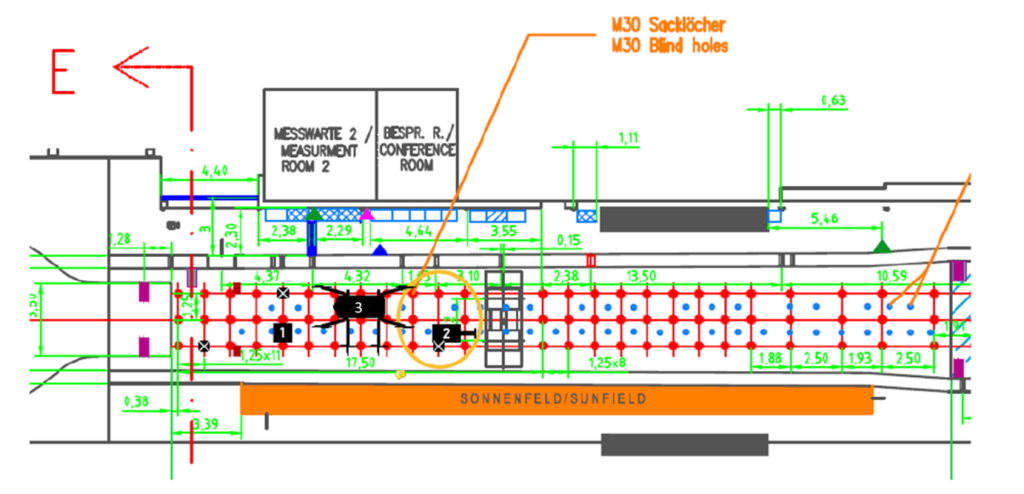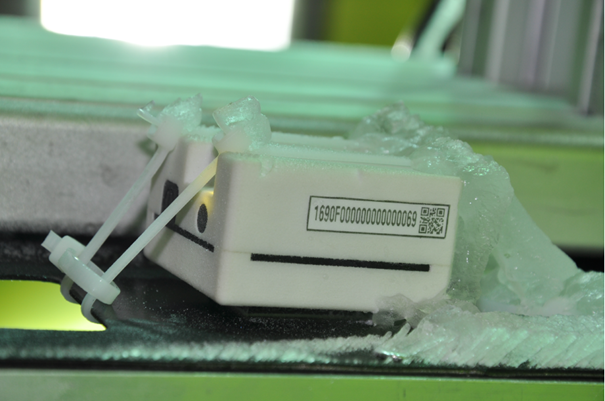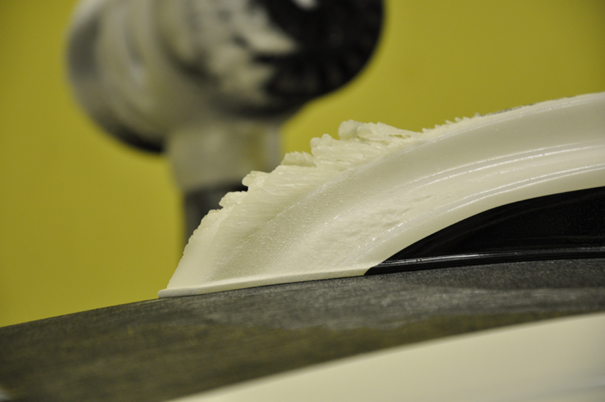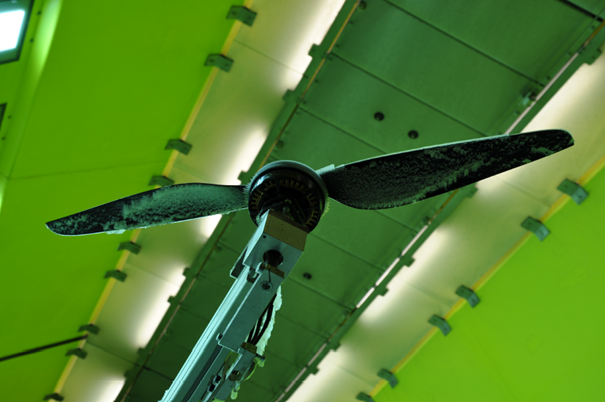Introducing low-threshold access to icing experiments in the RTA climatic wind tunnel with a multiuser approach
By bruchmann
3. October 2022
Project numbers: 5.509.20001, 5.509.20002, 5.509.20003
Involved cooperation partners:
RTA Rail Tec Arsenal
FH JOANNEUM | University of Applied Sciences
FACC AG
AIRlabs Austria
Project Description/Methods:
Many technological research challenges for drones, e.g. all-weather capability and countermeasures for icing, can currently only be addressed experimentally in complex and expensive infrastructures; due to the international importance of the topic, AIRlabs also offers such infrastructures. Such test campaigns quickly reach costs in the high five-digit euro range and are therefore not affordable for the primarily SME-based drone industry.
In order to make resource-efficient testing possible in the future, a novel approach of a multi-object mode in the resource-intensive climatic wind tunnel, for example, is target-oriented. Within the framework of a wind tunnel campaign, AIRlabs and its innovation project partners have now researched the framework conditions under which such tests can be carried out without negative counter-influences.
Since a theoretical investigation of a multi-object concept based on analytical tools is not sufficient for determining the technical feasibility, potential quality losses and organisational expenses, an innovative set-up was chosen and implemented. This involved analysing the icing conditions at different locations in the wind tunnel, which was carried out by positioning several test objects (in the current project, a large transport drone weighing several hundred kilograms, a rotor test rig with a drone drive). In order to determine possible harmful interactions of the test objects with each other or with the environment, additional sensors were set up, such as a microphone system for rotor sound level measurement, a GPS-independent indoor positioning system and a position transmitter.

In the course of an optimised positioning of the objects in the wind tunnel, the measuring distance was not only occupied to the flow direction, but also 3D by different placement of the test objects in height. In the experimental setup, the degree of obstruction was validated by placing a large drone asymmetrically close to the wind tunnel wall in order to check whether a parallel/symmetrical inflow continues to prevail for it and for the other test objects or whether obstruction or wall effects already occur.
In addition to the aerodynamic experiments, other technologies relevant to drones and innovative measurement methods were also explored in the multi-object setup, which revealed limits of applicability (e.g. due to interference noise for microphone systems).




Results/Dissemination:
This AIRlabs innovation project made it possible for the first time to conduct structured research into the framework conditions for innovative multi-object campaigns of drones and their measurement parameters on a real scale. This was done under the premise that even with a combination of larger and smaller test objects, these can be carried out without significant aerodynamic influence and clearly defined climatic inflow conditions prevail. This was successfully demonstrated. In the current innovation project, several test objects were successfully investigated at the same time; however, only one of them was one with moving parts, i.e. with a rotating rotor. AIRlabs therefore plans to test in the near future whether several rotor systems can be investigated simultaneously in the RTA without significant mutual interference using the innovative approach of multiuser tests. The team of AIRlabs Austria is happy to answer any further questions you may have.

